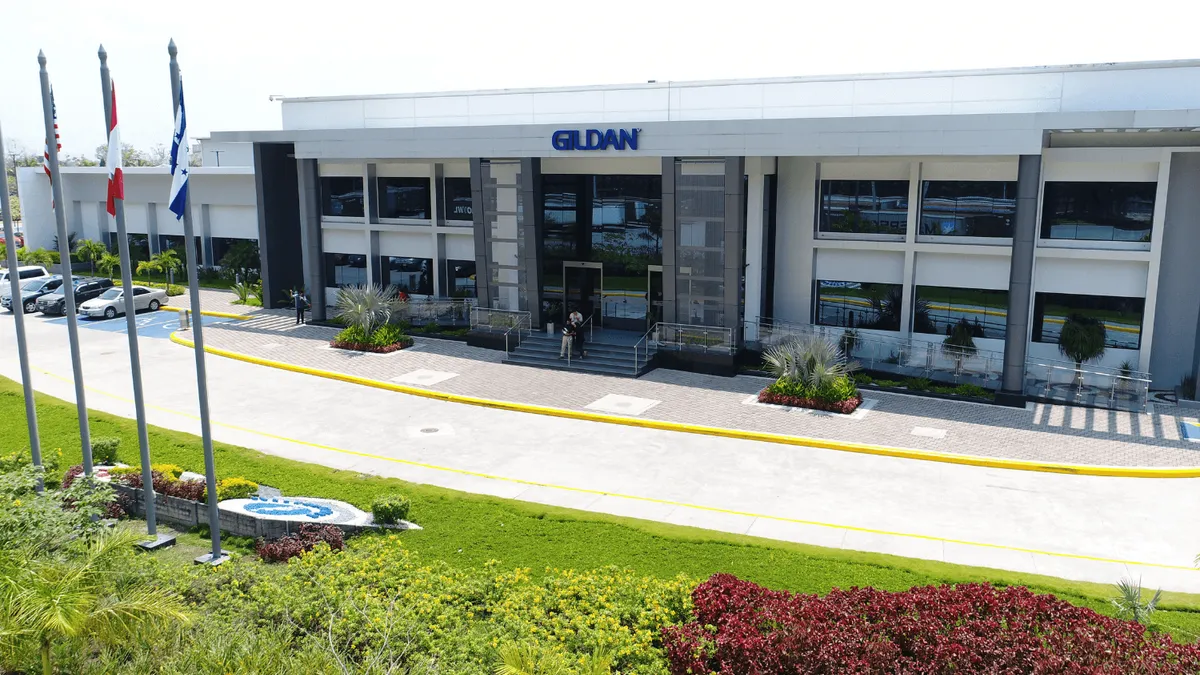Dive Brief:
- Gildan Activewear reported Q1 net sales of $712 million on Tuesday, marking a 2.3% increase year over year, according to a press release.
- The revenue boost was attributed to growth in the company’s activewear segment, which posted a 9% sales increase in Q1 and represents 91% of Gildan’s business.
- Gildan’s hosiery and underwear sales continued to be impacted by a phasing out of its sock licensing agreement with Under Armour. In Q1, hosiery and underwear sales fell 38%. In addition to the end of the agreement, Gildan said the segment was also impacted by market weakness.
Dive Insight:
For the 2025 fiscal year, Gildan expects revenue to increase by mid-single digits. The outlook included the anticipated impact of proposed U.S. tariffs, per the release.
In an earnings call with analysts, CEO Glenn Chamandy said the company believes it has a competitive advantage against the tariffs because it’s a vertically integrated, low-cost manufacturer. In addition, Chamandy said Gildan uses a significant amount of U.S. cotton and yarn in its products.
“We benefit from the amount of U.S. content that is in our product,” Luca Barile, CFO of Gildan, said in the call. “So we know that U.S. inputs make up a meaningful percentage of our cost of sales and so we’ve baked that into our guidance assumptions.”
In the release, Chamandy credited Gildan’s Q1 results to its Gildan Sustainable Growth strategy, which focuses on product innovation, sustainability and expansion into Bangladesh. The company is also gaining market share in printwear.
A slowdown in the U.S. economy could impact Gildan’s demand in the near term, however, said David Swartz, senior equity analyst at Morningstar Research Services.
“As was the case when the pandemic hit in 2020, marketing budgets correlate with printwear demand and can be cut quickly in times of economic distress,” Swartz said in a client note.
Swartz added that investors may be overestimating the direct impact of tariffs on the company.
“Although the US accounted for 89% of Gildan's quarterly sales, much of its product cost is attributable to US-sourced cotton and is, therefore, not subject to tariffs,” Swartz said. “Moreover, it utilizes a largely Central America-based supply chain that has not been threatened with exorbitant tariffs.”











